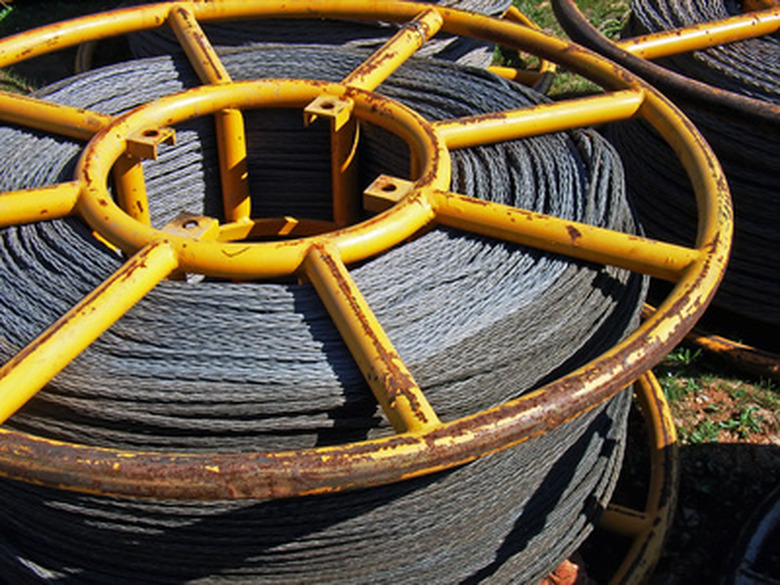How To Size Wire Gauge For Electrical Current
You have probably noticed that the electrical wires going into your house from the utility pole are much bigger than, say, an extension cord. This is because the size, or gauge, of the wire determines the amount of current it can safely conduct. Whereas the wire entering your house might be designed to conduct 200 amps, an extension cord might only need to conduct 20 amps at the most, or even less than 1 amp, depending on what is plugged into the cord. So how can you determine which wire gauge is correct for the amps you need? This article will provide you with the information you need to choose the correct gauge of wire for residential electrical circuits.
Step 1
Notice that electrical cable has labels like "12-3" or "14-2." The first number indicates the wire's size using the American Wire Gauge system (AWG). The second number refers to the number of wires in the cable, not including the ground. For the purposes of this article, we are concerned only with the first number. You will notice in the examples in the next section that the larger the wire (and its current capacity), the smaller the gauge number. Choosing the correct gauge is very important, because if the wire is too small for the current being conducted, the wire will overheat and possibly cause a fire.
Step 2
Refer to the reference charts in your "Ugly's Electrical Reference" or "Audel Mechanical Trades Pocket Manual." (The chart is called "Current Capacities" in the Audel book.) You'll see that a two basic factors will determine the correct choice. First, what kind of wire is it? That is, will the wire be inside a cable or conduit, exposed to air, or weatherproof? Each of those categories has different current capacities for each wire gauge. Second, how long will the cable extend? As the length exceeds 50 ft., for instance, you will need to use a larger wire. We'll assume in this article that we're using standard copper wiring, sheathed in cable, for use indoors.
Step 3
The current capacity (also known as ampacity) will depend on the appliances that will be connected to the circuit. An electric stove, for example, is rated for 40 amps, 240 volts. If you look up 40 amps in your chart, you will see that #8 wire is required. Your microwave and refrigerator each need to be on their own individual 20 amp circuits. Look up 20 amp in your chart, and you'll see that #12 wire is required.
Step 4
A stove, refrigerator and microwave are easy to figure out, because each appliance has a dedicated circuit. Some circuits are not so straightforward. A lighting circuit, for example, might have two light fixtures and five or six outlets for lamps, television, or stereo. You will have to figure out how many amps will be required on the circuit first. For a 120 Volt circuit, you add up the wattages of all of the appliances and lights on the circuit and divide that number by 120 (amps equals watts divided by volts). For example, I can see on the back of my television and stereo that their ratings are 130 watts and 185 watts respectively. My cable box is 400 watts. I can also see the lights' wattages right on their bulbs. I use compact fluorescent bulbs, so I have five 27 watt bulbs. I add these all up to get 850 watts. Divide this by 120 to get 7 amps. Look on your chart, and you see 7 amps falls comfortably into the 15 amp rating, so #14 wire is fine.
Warning
Electricity hurts. If you are unsure about what you're doing, get a friend who knows a lot about residential wiring. Better yet, hire a professional and see if they'll let you watch over his or her shoulder.
